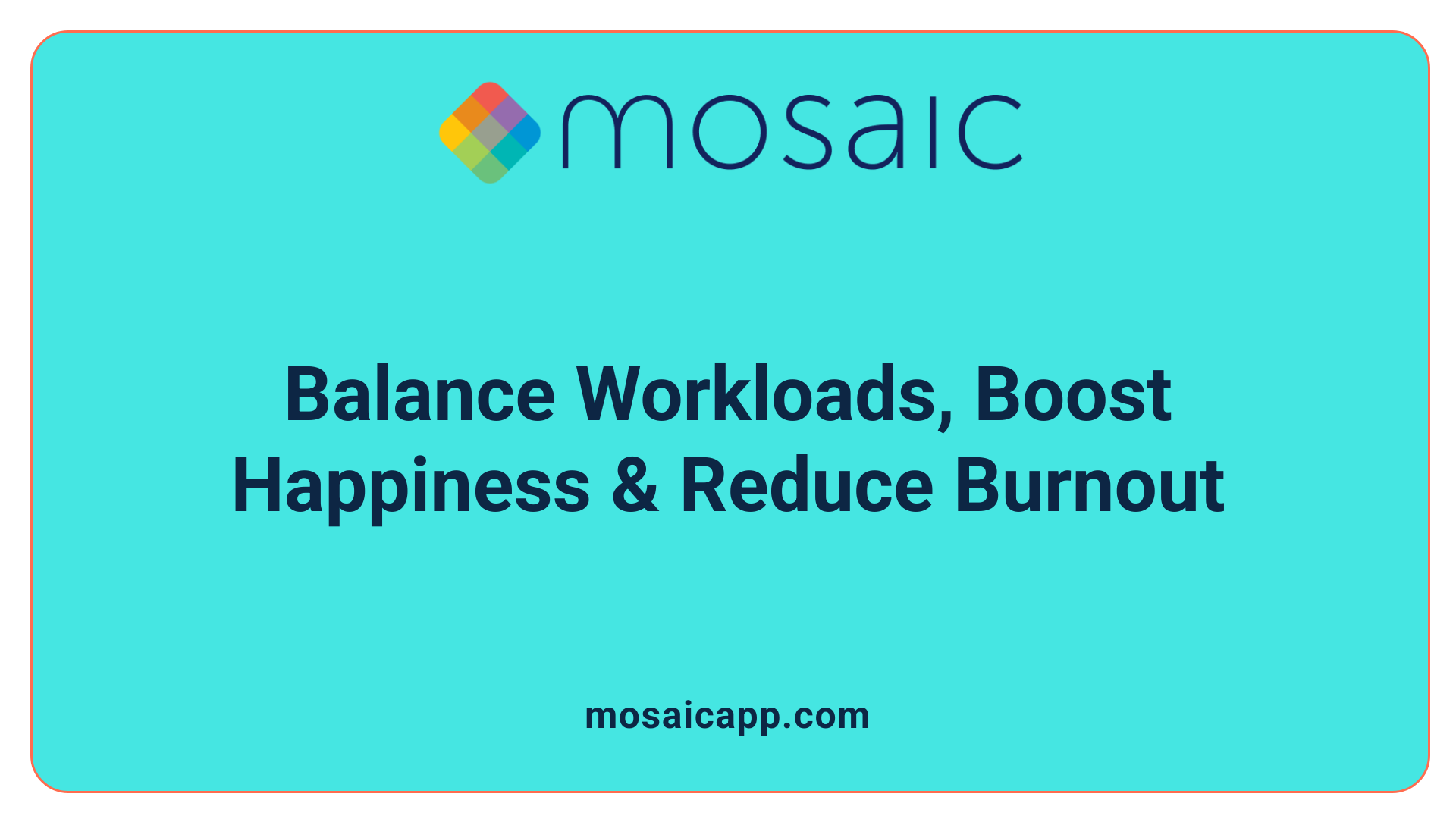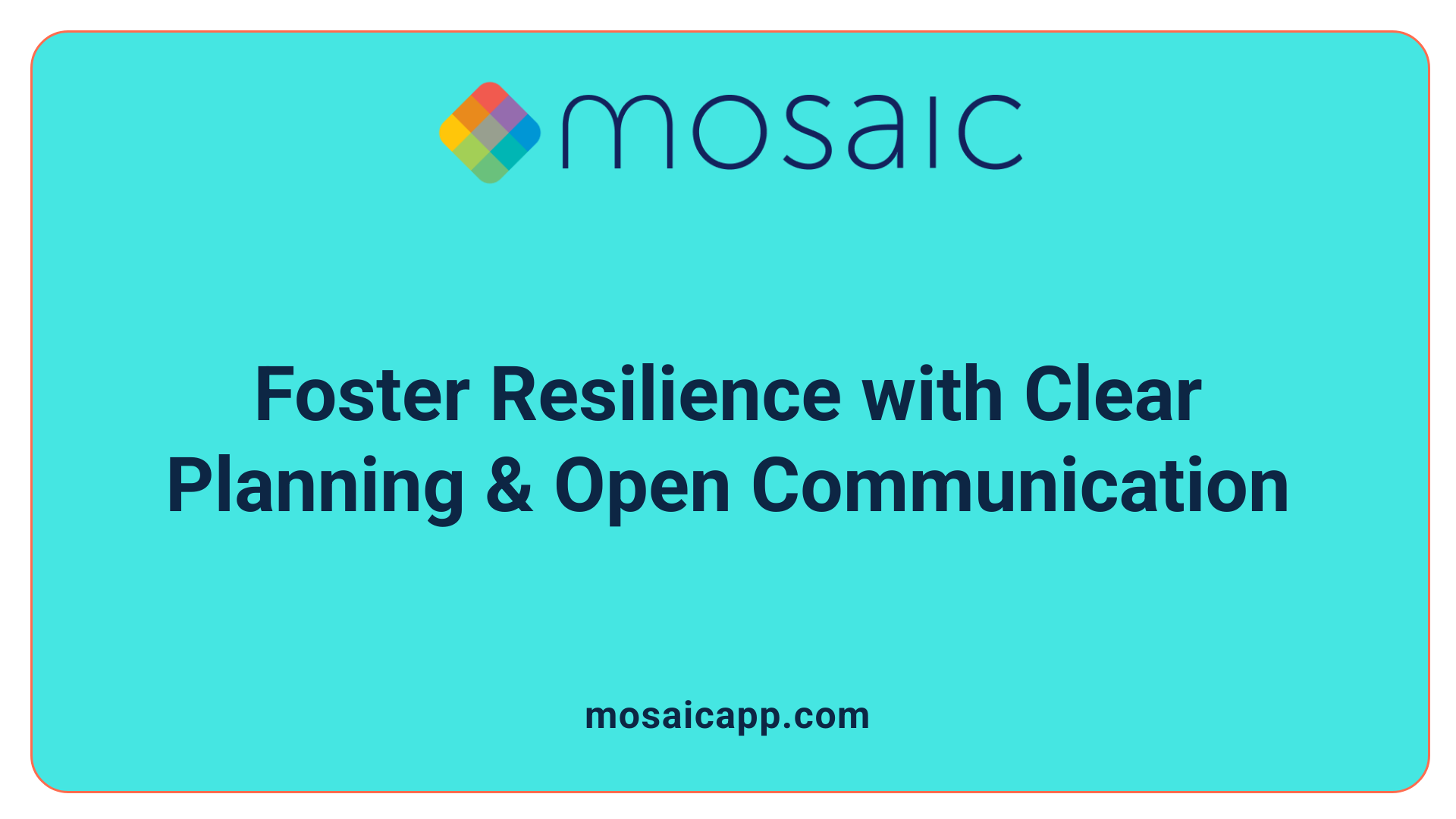Understanding the Foundation of Resilient, Content Teams
Creating resilient and happy teams hinges on effective workload balancing, which directly influences mental health, organizational culture, and overall productivity. Organizations that prioritize fair task distribution and supportive practices develop an environment where employees thrive, adapt, and remain engaged despite challenges.
Defining Resilience and Its Role in Team Success

What is team resilience?
Team resilience is the collective ability of a group to stay strong, adapt, and continue working towards their objectives despite facing difficulties or setbacks. It involves more than just bouncing back from challenges; resilient teams actively learn from their experiences, maintain motivation, and support one another during tough times.
Traits of resilient teams
Resilient teams display several distinguishing characteristics. These include psychological safetyâa sense of trust that allows members to speak openly without fear of judgment. They have a strong team identity, fostering cohesion and shared purpose. Resilient groups also find meaning in setbacks, viewing failures as opportunities for growth. Other traits include positive intentâbelieving in each other's good intentionsâand the capacity to accept healthy challenges, which keeps the team dynamic and innovative.
Benefits of resilient teams
Organizations that cultivate resilient teams reap numerous advantages. These teams are more adaptable, able to navigate changes efficiently and remain productive during disruptions. They experience lower turnover rates because members feel supported and engaged. Resilient teams recover swiftly from setbacks, enhancing overall problem-solving capabilities. Additionally, fostering resilience boosts employee well-being, promotes innovation, and strengthens collaboration, which collectively lead to sustained high performance.
Why is workload balancing important?
Workload balancing plays a vital role in fostering resilience and happiness within teams. Properly distributing tasks prevents burnout and reduces stress, creating a healthier work environment. When workloads are managed fairly, employees feel supported and valued, which nurtures psychological safety and trust. Well-balanced duties enable team members to regulate their emotions better, adapt more readily to changes, and develop a growth mindset.
Managers can use data and tools to monitor workloads, ensuring they remain manageable while encouraging open communication. This approach supports continuous improvement and a positive organizational culture where teams can effectively respond to challenges. Ultimately, balancing workloads ensures that resilience is not just a reactive trait but a sustainable, integral part of team functioning.
The Significance of Workload Balancing for Team Wellbeing

How workload affects mental and physical health
Workload is a significant factor influencing team members' mental and physical health. Excessive demands and constant pressure can lead to stress, anxiety, fatigue, and burnout. When employees feel overwhelmed, their concentration and motivation decline, which can compromise overall well-being.
The connection between workload and burnout
Research highlights a direct link between unmanaged workloads and burnout. A heavy workload, coupled with inadequate support, often results in emotional exhaustion, reduced personal accomplishment, and depersonalization. Burnout not only affects individual health but also diminishes team cohesion and productivity.
Ways workload balancing improves workplace happiness
Balanced workloads foster a healthier work environment by reducing stress and creating realistic expectations. When tasks are distributed in a manageable way, employees experience greater job satisfaction, engagement, and a sense of accomplishment. This promotes a positive culture that values well-being and supports resilience.
Strategy Description Impact on Wellbeing Prioritizing tasks Sorting tasks based on importance and urgency Less overwhelm, clearer focus Using workload management tools Real-time monitoring of team capacity Early detection of overloads, timely adjustments Regular check-ins Open communication about workload concerns Builds trust, prevents unnoticed strain Proper planning Forecasting work, setting realistic deadlines Ensures achievable goals, reduces last-minute stress Resource management Aligning tasks with team skills and capacity Avoids over- or under-utilizing team members, promotes balanced distribution Supporting environment Encouraging openness and work-life balance Fosters resilience, improves overall happiness
Search query for more info: Workload management strategies, reducing burnout, improving job satisfaction
Organizational and Leadership Practices Supporting Effective Workload Balance
How does workload balancing contribute to workplace wellbeing and resilience?
Managing workloads effectively is essential for fostering a healthy, resilient work environment. When organizations balance tasks fairly and allocate resources wisely, employees experience less stress and a lower risk of burnout.
A balanced workload helps individuals maintain their mental health by preventing work-related overwhelm, which keeps motivation and job satisfaction high. It encourages a supportive culture where employees feel valued and fairly treated.
Furthermore, workload management enhances overall team resilience. By smoothing out peaks of intensity and ensuring tasks are achievable within given timeframes, organizations can adapt more quickly to unexpected challenges. This stability leads to quicker recovery from setbacks and maintains consistent productivity.
Using appropriate tools and strategies for resource planning allows organizations to prioritize effectively, shift responsibilities as needed, and prepare for fluctuations. This proactive approach ensures that the team remains flexible and capable of meeting organizational goals despite ongoing pressures.
Ultimately, a focus on workload balance supports both individual wellbeing and organizational resilience. This approach leads to a more sustainable, engaging working environment that can thrive amid economic and operational uncertainties.
Impact of Workload Management on Team Effectiveness and Happiness
How does effective workload management impact team effectiveness and happiness?
Managing workload effectively is essential to maintaining a high-performing, happy team. When tasks are allocated thoughtfully based on each memberâs skills, capacity, and preferences, it boosts engagement and job satisfaction. This approach prevents individuals from feeling overwhelmed, which is a common cause of stress and burnout.
Using tools like project management software and fostering regular open communication helps teams monitor workloads in real-time. These strategies enable quick adjustments, ensuring that no team member is overburdened and that deadlines are realistic and achievable.
Good workload management also enhances overall productivity. When team members feel their work is manageable and valued, morale improves, leading to a positive work environment. Maintaining balance through continuous assessment and flexibility leads to sustainable work practices, keeping team members motivated and resilient.
In summary, effective workload management supports healthier, more engaged teams. It directly correlates with better performance and greater happiness, creating a workplace culture where individuals thrive.
Activities and Techniques to Foster Resilience via Workload Adjustments

What techniques and activities can help foster resilience through workload adjustments?
Building resilience in the workplace involves strategic approaches that address workload management and support systems. Regular workload reviews are essential; they help ensure tasks are evenly distributed and prevent employees from becoming overwhelmed. By continuously assessing and adjusting workloads, organizations can reduce stress and enhance capacity to cope with challenges.
Flexible scheduling and remote work options further support resilience. These adjustments allow employees to balance their professional and personal lives better, decreasing burnout risk. When employees feel they have control over their schedules, they tend to be more adaptable and motivated.
Investing in resilience training programs significantly boosts employees' coping skills. Workshops focusing on emotional regulation, stress management, growth mindset, and problem-solving empower staff to handle adversity more effectively. These programs often include mindfulness exercises, self-awareness drills, and time management techniques, which help employees maintain mental well-being.
Creating a supportive environment is just as vital as workload adjustments. Encouraging strong social networks, open communication, and recognition of resilience efforts fosters psychological safety. Such support systems enable employees to share challenges and learn from each other, strengthening overall team resilience.
Implementing these activities alongside promoting well-being practices, such as mindfulness and self-care routines, encourages a culture where resilience is continually cultivated. The combination of workload flexibility, targeted resilience training, and a supportive climate enables teams to adapt, recover, and thrive even during stressful periods.
Special Considerations for Workload Balancing in Healthcare and Specialized Teams
Are there special considerations for workload balancing in healthcare or specialized teams?\n\nYes, healthcare settings present unique challenges when it comes to managing workloads. Professionals like ICU nurses, emergency doctors, and radiologists often work under high pressure with unpredictable demands. To maintain team resilience and ensure quality care, tailored approaches are essential.\n\nOne critical aspect is shift planning. Efficient scheduling must align with workload peaks, allow adequate rest, and support staff well-being. Resource allocation also plays a vital role; ensuring sufficient staff and equipment reduces stress and prevents overburdening team members.\n\nSupporting mental health is equally important. Overwork can lead to burnout, which diminishes performance and increases turnover. Providing access to psychological support, encouraging open discussions about mental health, and implementing work-life balance initiatives help sustain a motivated and resilient workforce.\n\nAdvanced planning tools can optimize workloads by considering multiple factors like operational costs, fairness, and individual capacity. Regular review and adjustment of schedules promote fairness and adaptability. Overall, these strategies contribute to healthier staff, better patient outcomes, and a more resilient healthcare environment.
The Influence of Organizational Culture on Workload and Wellbeing

What role does organizational culture play in workload balancing and team wellbeing?
Organizational culture significantly impacts how workloads are managed and how the wellbeing of teams is prioritized. A positive culture promotes open communication, fairness, and flexibility, which are essential for balancing employee demands with their mental health needs.
In such environments, employees feel comfortable sharing their concerns and workload challenges. This transparency encourages collaborative efforts to distribute tasks more evenly and address stressors proactively.
Supportive cultures also implement policies that foster work-life balance, such as flexible schedules, remote work options, and mandatory breaks. These initiatives help prevent burnout and support overall mental health.
Leadership plays a crucial role by modeling healthy boundaries, providing access to wellbeing resources, and encouraging a culture of trust and safety. When managers prioritize wellbeing, teams are more resilient, motivated, and engaged.
Ultimately, a strong organizational culture that values wellbeing enhances not only workload management but also boosts employee satisfaction, reduces turnover, and maintains high productivity levels over time.
Cultural Aspects Impact on Workload & Wellbeing Additional Details Openness Facilitates honest communication about stress and workload Encourages team members to speak up without fear Flexibility Supports work-life balance through adaptable work policies Includes remote options, flexible hours Leadership Support Demonstrates commitment to employee health and safety Provides resources, models boundary-setting Fairness & Trust Ensures equitable workload distribution Builds confidence and team cohesion Policy & Practice Embeds wellbeing into everyday operations Regular breaks, mental health days, wellness programs
Creating and maintaining this type of culture requires ongoing effort and commitment from all organizational levels. When done effectively, it leads to healthier, more resilient teams capable of adapting and thriving amid challenges.
Practical Tips for Building Resilient, Happy Teams through Workload Management

What practical tips can organizations implement to foster resilient teams through workload management?
Effective workload management is essential for nurturing resilient and motivated teams. One of the first steps is to ensure clear planning and open communication. Organizations should set realistic deadlines and prioritize tasks based on urgency and importance. Distributing work evenly, considering individual team members' capacity and skills, prevents overload and burnout.
Regular check-ins allow managers to monitor workload levels continuously. Utilizing management tools like project management software helps visualize task progress and identify potential overloads early. This enables timely adjustments, such as reallocating resources or adjusting deadlines to keep the team on track.
Promoting work-life balance is equally important. Encouraging boundaries between work and personal life, instituting regular breaks, and supporting mental health initiatives help sustain long-term engagement. Flexible schedules and mental health days also empower employees to manage their well-being better.
Automation plays a vital role in workload management. Automating repetitive, low-value tasks using technology reduces administrative burdens and frees up time for more meaningful work. Tools like Asana or Trello enhance visibility across projects, making it easier to coordinate efforts and recognize accomplishments.
Creating a supportive environment where feedback is welcomed and peer support is encouraged bolsters team morale. Recognition of efforts and achievements fosters a positive atmosphere, helping teams recover quickly from setbacks and stay committed to their goals.
In summary, organizations can foster resilient teams by combining strategic workload planning, promoting work-life balance, adopting appropriate management tools, and nurturing a supportive, communicative culture. These practical strategies help teams adapt to challenges efficiently and maintain high performance.
Cultivating Resilience and Happiness for Long-Term Success
Prioritizing workload balancing is essential for cultivating resilient, happy teams. Organizations that adopt effective strategies and foster supportive cultures create environments where employees can thrive, innovate, and weather challenges confidently. Continuous commitment to mental health, open communication, and balanced workloads ensures sustainable success and well-being for all team members.

